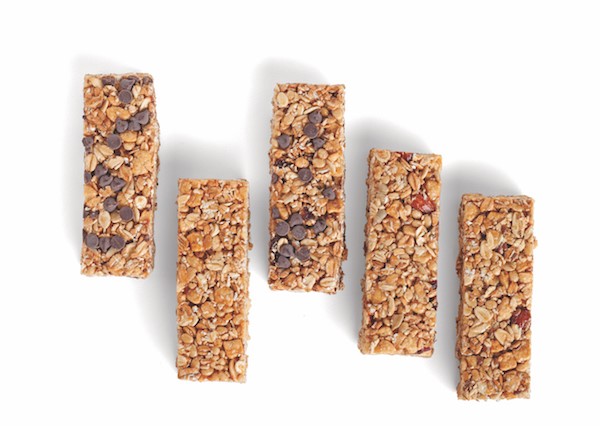Primary Media

Description
Oh my, there are a lot of protein and energy bars on the shelves. And while we love the variety and options, how do you know if you're getting the right one for you? To help us out, our dietitians identified three types of bars and what to look for in terms of calories, protein, and carbs.
The Meal Replacement
If you're eating a protein bar instead of breakfast or lunch, look for one that have the following break down:
Calories: 250-400
Protein: 20-30g
Carbs: 30-45g
Fat: 7-17g
Fiber: 3g or moreExamples: Clif Builder's, Promax, Performance Inspired, Garden of Life Performance, Probar Base
The Snack Bar

For a pre-workout snack, or for those times when it's going to be a while before your next meal (road trips, long flights, kids' soccer games, etc.), a snack bar is a convenient, shelf-stable option. Here's what to look for:
Calories: 100-250
Protein: 5-15g
Carbs: 15-30g
Fat: 5-15g
Fiber: 2g or moreExamples: Clif Whey Protein, Kind Fruit & Nut, Luna, RX Bar, Think Thin Protein & Fiber, Quest Hero
Hyvee Dietitian Expert Tip
Low fuel stores can weaken the immune system, increase stress, hinder recovery, and increase cortisol levels. For athletes, I emphasize fueling well before training and after training, as well as pre-hydrating and staying hydrated.The Recovery Bar
After a tough workout, it's important to replenish. Sometimes a protein bar is a convenient way to do just that. Look for a bar that has a carbohydrate to protein ratio of 3:1 or 4:1 within an hour after your workout. That will help replace energy stored in your muscles and enhance muscle growth. Here's about what that should look like:
Calories: 200-400
Protein: 6-10g
Carbs: 24-40gExamples: Clif Bar, Power Performance Bar, Go Macro Bar, Larabar, Picky Bar, Probar Meal
If you're still overwhelmed by the choices, you can always make your own.

